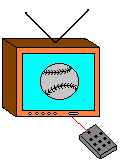By now you’ve learned that there are many different ways to get your advertising messages across. But how can you get the most for your advertising dollar? There are advantages and disadvantages to each medium.
Here are the main media for advertising:
1. Newspapers
2. Magazines
3. Television
4. Radio
5. Direct Mail
6. Telemarketing
7. Brochures and Flyers
8. Free Samples
9. Internet
10. Cause/Brand Marketing
11. Product Placement Ads
12. Network Marketing
13. Consumer Surveys
14. Publicity Stunts
15. Outdoor Advertising
When considering which advertising medium (or media) to use to promote your product or service, you must consider four things:
1. Whether the target consumer uses this medium
2. Overall cost of advertisement
3. Average cost per target consumer
4. Whether this medium is a good fit for my product or service.
5. Whether another medium or combination of media will give my product more exposure per advertising dollar.
Newspapers
1. Circulation (How many people read it?)
2. Does the image or reputation of the newspaper fit my product or service’s image or reputation?
3. Area of Circulation (Where is it published?)
4. Readership (How many people read it?)
5. Target readership (How many of the people who read it are my target consumers?)
6. How much will the advertisement cost per target consumer?
Magazines
Basically, you ask the same question as you would for newspapers. Newspapers tend to be for general readers. Magazines are often a better choice because magazines tend to target specific readerships.
For example, Vogue magazine targets women who are interested in fashions and have the money to pay for them. Car and Driver targets teenagers who are interested in cars as a form of recreation.
Some magazines are published only in very small geographical areas. Some are published worldwide. You should place your advertisement in a magazine published in an area that fits your marketing area and targets your target consumer.
Television
Television advertisements, of course, cost more than ads for newspapers that cover the same geographical areas. There are, however, three major advantages to advertising on television:
1. You can select time slots when your target consumers are most likely to be watching television.
2. You can have your ad placed along with a show your target consumers are likely to be watching. when your target consumers are watching TV.
3. Television is an active, visual medium. This may fit advertising needs for your product or service.
Radio
There are several advantages to advertising on radio:
2. Radio broadcasts to a captive audience, such as drivers during rush hour. Listeners don’t leave during a commercial.
3. Since radio doesn’t command complete attention the way television does, the listener is in a less critical frame of mind. Thus, he’s more open to advertising suggestions.
4. Radio broadcasts stimulate imaginations; TV broadcasts take the place of imaginations. Thus, you can create “scenes” on radio that would be impossible for television.
Direct Mail
Direct mail is possible only if you have a mailing list (email or snail mail) of your target consumers. The advantage of direct mail is that everyone who sees your ad will be a target customer.
A disadvantage to direct mail by snail mail is the cost. You have to create the printed material, hire someone to address envelopes and stuff them, apply for a bulk mailing permit, and pay for postage. Still, it’s one of the cheapest forms of advertising per target consumer.
Telemarketing
Telemarketing involves calling people at their homes, usually between 6:00 PM and 9:30—the time when they’re most likely to be home. It’s also the time when they would least want to be bothered. Telemarketers use mailing lists targeting specific groups of people.
There are two advantages to telemarketing:
1. Everyone contacted is believed to be a target consumer.
2. This form of advertising costs less per target consumer than almost any other form of advertising.
A major disadvantage is that most people hate telemarketers almost as much as they hate pedophiles. That’s why most companies don’t use this form of advertising.
Brochures and flyers
 A flyer is a single sheet of paper bearing an announcement or advertisement. A brochure us usually one sheet, but it’s folded and is usually of heavier stock paper.
A flyer is a single sheet of paper bearing an announcement or advertisement. A brochure us usually one sheet, but it’s folded and is usually of heavier stock paper. Flyers and brochures are used for small geographical areas because the target consumers are all found in that small area. Several times a week, you’ll find a flyer or brochure in your mailbox, advertising something local, such as a new apartment. In these cases, very few of the people getting the flyers or brochures will be interested, but this means is the most cost-effective means of reaching people in a small area.
For this reason, brochures or flyers may also be placed in specific places, such as restaurants or tourist areas. Other small items, such as sports schedules or packs of tissue may also be used for this purpose.
Free Samples
This is one of the most expensive forms of advertisements. It not only involves giving away the product for free, but it also involves paying for the means of delivering the free samples to target consumers.
Although it’s costly, it’s often the preferred means of promoting a new product or promoting a product in a new market.
One advantage is, it’s a cost-effective means of reaching target consumers in a small target area. Everyone who accepts a sample will be a target consumer.
Consumer Surveys
Typically, businesses conduct consumer surveys to measure consumer tastes, likes, and dislikes prior to developing a product.
Sometimes, surveys are taken for the purpose of identifying potential customers and making a sale to them. Either the sale is made on the spot, or the consumer’s contact information is recorded for a later sales pitch.
Other Forms of Advertising
We’re grouping several other forms together, either because they’re self explanatory or we’ve set aside sufficient space for them in other lessons. They include the following:
1. Internet marketing
2. Cause/brand marketing
3. Product placement ads
4. Network marketing
5. Outdoor advertising (such as billboards)
6. Publicity stunts.
From where does your target consumer get his information?
Television? Which types of programs? What times of day?
Radio? Which types of programs? What times of day?
Movies? What genre of movies?
Internet? Which web sites does he visit?
Outdoor advertising? Where would he see them?
Magazines? Which magazines does he read?
That’s where you should direct your advertising.
Now it’s your turn!
How will you and your team advertise your product or service?








When considering which advertising medium (or media) to use to promote your product or service, you must consider four things: details here
ReplyDelete